Hegel V10
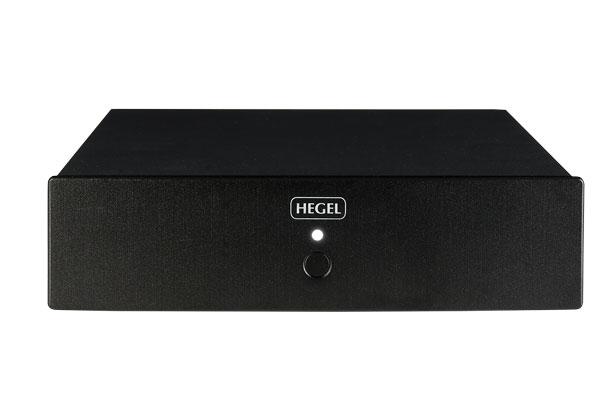
 It’s 1964, and offstage at a folk festival in Newport, a tense Robert Allen Zimmerman makes the final adjustments to his guitar as The Weavers’ Ronnie Gilbert announces to an excitable crowd: “And here he is... take him, you know him, he’s yours”.As changes of direction go, Dylan’s decision to ditch his acoustic guitar in favour of an electric one wouldn’t on the face of it appear to be particularly risky, but history suggests otherwise. All of which brings us rather clumsily to Hegel and its recent about face concerning phono stages. While its assertion that it had no intention of ever producing the components and then going ahead and doing so never really caused the same howls of derision or dissenting boos as those first few chords of Like A Rolling Stone might have done, the company risked a very public humiliation.
It’s 1964, and offstage at a folk festival in Newport, a tense Robert Allen Zimmerman makes the final adjustments to his guitar as The Weavers’ Ronnie Gilbert announces to an excitable crowd: “And here he is... take him, you know him, he’s yours”.As changes of direction go, Dylan’s decision to ditch his acoustic guitar in favour of an electric one wouldn’t on the face of it appear to be particularly risky, but history suggests otherwise. All of which brings us rather clumsily to Hegel and its recent about face concerning phono stages. While its assertion that it had no intention of ever producing the components and then going ahead and doing so never really caused the same howls of derision or dissenting boos as those first few chords of Like A Rolling Stone might have done, the company risked a very public humiliation.
The change of heart was based on a combination of market forces and pragmatism – namely, its analogue engineers were left twiddling their thumbs due to the company’s focus on digital fare, while the continued robustness of the vinyl revival meant it would be churlish not to reconsider the decision. Dylan proved that an about face can work (in the end), but will Hegel enjoy the same success?
Fortunately, company founder Bent Holter had designed a phono amp for personal use around 15 years earlier and it’s from this that the V10 takes its cue. Able to cater for both moving-magnet and moving-coil cartridges, it offers unbalanced inputs alongside unbalanced RCA and balanced XLR outputs. Power comes courtesy of an external PSU that’s been custom designed for the preamp. Slightly bulkier than your average wall-wart variant, it sports two separate 18V feeds and comes with a Y-shaped lead with dual plugs that neatly fit into a pair of recessed sockets in a void underneath the chassis. The void cunningly provides a physical barrier between the PSU regulation in the front of the amp and the audio/RIAA circuitry towards the rear in an effort to keep unwelcome interference to a minimum.
As is so often the case when it comes to phono stages, concentrating on getting the settings right pays dividends when it comes to performance, and some adjustments are better left to your hi-fi dealer – but more on this in a moment. There are two rows of DIP switches – ten per channel no less –for matching the gain and loading requirements of your cartridge of choice. Typically these are small and rather fiddly, meaning that those with chubbier, clumsy fingers might want to employ the assistance of someone with more nimble and dexterous digits.
The first two activate a subsonic filter operating below 20Hz, while the third and fourth provide an added boost of +5, +10 or +12dB to the standard MM and MC gains. The latter are specified as 34dB and 54dB, respectively, when using the unbalanced outputs or 40dB and 60dB via the balanced outs.
The fifth, sixth and seventh switches are used for selecting load capacitances of 100, 147, 200, 220, 247, 320, 420 or 467pF for the MM input. The eight and ninth switches select 100 or 300ohm input for the impedance of the MC stage. Last, but by no means least, the final switch toggles between MM and MC phono inputs according to your preferred cartridge of choice.
These settings are then further supplemented by a series of internal controls and links that can be used to add an additional 6dB gain boost to both MM and MC sections as well as extending MC loading options from 50 to 500ohm. This is the point where the expertise of your hi-fi dealer is probably best utilised unless you really know what you’re doing.
The complexity of all the different switch combinations (illustrated in an at times bewildering table on the underside of the V10) combined with the fiddly nature of the DIPs makes it all too easy to inadvertently flick the switch adjacent to the one you actually require. For example, while there are separate MM and MC inputs and corresponding switches to activate them, the MC headamp connects directly into the MM section – meaning it’s not possible to have connections to both sockets simultaneously. As previously highlighted, your best option to avoid bewilderment, stress and frustration is to employ the help of a seasoned professional before use.
Sound quality
Happily, any anxiety brought on by the potential befuddlement of setup quickly falls away once the V10 is up and running. With our Clearaudio MC Essence cartridge called into action, it becomes clear that Hegel’s hot streak (last experienced with its stunning H95 network attached integrated amplifier in HFC 468) is set to continue here. The V10 is impressively quiet with background noise and hum notable only by their absence, and vinyl roar and surface noise are subtly suppressed leaving fine detail to blossom. Even though the overall balance is on the smooth side, the V10 is certainly not short of transparency. This means that while cymbals and percussion steer well clear of any sense of hardness or sibilance – actually sounding slightly softer than expected – they still come across as clean and distinct. It’s difficult to think of any rival offerings at this price able to so deftly juggle smooth presentation with such precise insight.
Equally impressive is the sense of space and ambience that’s so gracefully revealed from familiar recordings. Front-to-back depth is very good and regardless of whether performances are live or studio based, each instrument, performer and backing vocalist is clearly pinpointed within the soundstage while remaining easy to focus on.
The only real downside in this respect is that there could be a little more solidity centre stage as some more potent vocalists tend to sound edgy and come across as a little bit more diffuse. Malia and Boris Blank’s Raising Venus being a case in point as Malia is pushed a little further back into the soundstage than we’re used to – forcing us to adjust our listening position to restore her immediacy.
The bass guitar on Tal Wilkenfeld’s Haunted Love displays an appealing ease and fluidity to masterfully underpin the vocals. This can sound too stark and uninvolving elsewhere, but the V10 appears to knit the two together to make for a more captivating listen. Moving to the lower frequencies shows it is more than capable of going deep while remaining tuneful. The backing synth bass of Ava Max’s Who’s Laughing Now bounds along with joyous pace and impact, with each note clearly delineated from the next. Despite being a relatively simple track, it’s one that has tripped up many rival stages in the past.
Moving on to something altogether more raucous and challenging, Corey Taylor’s CMFT Must Be Stopped is a riotous explosion of guitars and at times seemingly primal shouting. The V10 impressively manages to separate all the disparate layers of noise here, but somehow remains a touch over polite in doing so. Similarly, noisy material continues the theme, with the Hegel rarely being caught out and revealing mastery of separation and detail retrieval, but a reluctance to let its hair down and really have fun.
This see-through smoothness is broadly continued across both MM and MC inputs – something that isn’t always a given on rival offerings – meaning that whether highlighting the top-end clarity of Ortofon’s 2M Black (HFC 434) or the extra depth and imaging ability of Clearaudio’s MC Essence, it’s a very impressive performer across the board.
Conclusion
It might have been a long time coming, but on the evidence of the V10’s performance Hegel’s about face when it comes to phono preamplifiers was the right decision. Yes, it’s fiddly to setup and ensuring that you select the right combination of DIP switches for your cartridge isn’t the most intuitive of procedures, but that’s perhaps more to do with the generosity of adjustments and features on offer than anything else. The real headline here is that with a wide range of different cartridges – both moving-coils and magnets – the results are consistently impressive. Effortlessly smooth, gloriously insightful and impeccably voiced for a crystal-clear performance, the V10 is an absolute triumph. Clearly there’s much to be said for changing your mind now and again. HFC
DETAILS
Product: Hegel V10
Type: MM/MC phono preamplifier
FEATURES
● Input: MM/MC input
● Adjustable DIP switchesr
● Inputs: unbalanced RCA; balanced XLR
 |
Inside this month's issue: Arcam Radia A25 integrated amp, iFi Audio iDSD Diablo 2 DAC/headphone amp, Eversolo DMP-A8 streamer/DAC/preamp, Line Magnetic LM-845IA valve amp, Record Store Day Spring Drop, standmount loudspeaker Group Test and much, much more
|

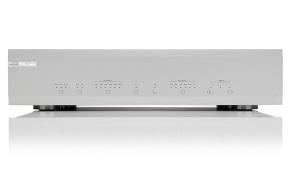
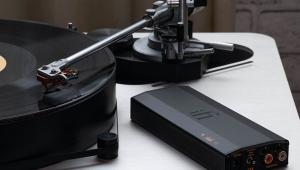

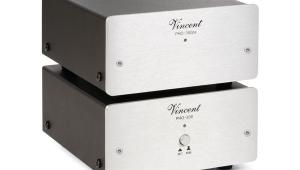

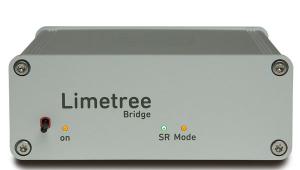
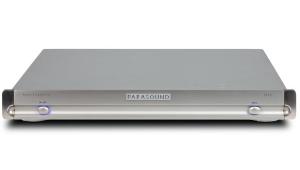
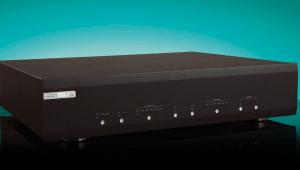
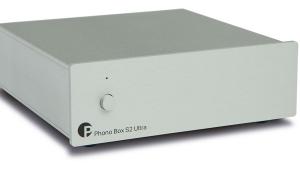

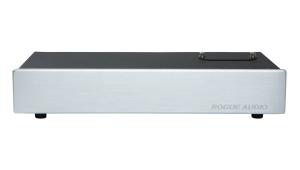

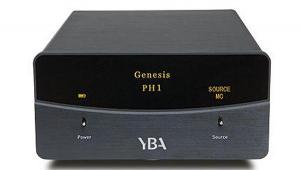

































.jpg)



